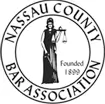Chapter 13 Debt Limits

Bankruptcy is an essential legal tool relied upon by millions of Americans each year. If you are considering bankruptcy, it’s important to identify the type of bankruptcy best suited to your circumstances. Chapter 13 bankruptcy is helpful for many debtors who earn an income and would be able to repay their debts if given additional time and a reduced monthly burden.
Chapter 13 has certain requirements, however, including an upper limit on a filer’s total combined debts. Below, we discuss Chapter 13 and the current debt limits. If you’re facing overwhelming and burdensome debt in the Hudson Valley, call a dedicated Poughkeepsie debt relief and bankruptcy lawyer at the Law Office of Taran M. Provost to explore your options for debt relief.
Expanded Debt Limit for Individual Filers Until 2024
Debtors who wish to file for Chapter 13 relief are only eligible if their total debts are below a certain threshold. Until recently, there were separate limits for secured and unsecured debts.
Secured debts refer to debts that are secured by collateral, such as a house or car. If a debtor defaults on a home mortgage or a car loan, the creditor can foreclose on or repossess the collateral to sell and recoup the outstanding loan amounts.
Unsecured debts are debts with no collateral attached. Common unsecured debts include credit cards and medical bills.
Before June 2022, individual debtors could only qualify for Chapter 13 if they owed no more than $465,275 in unsecured debts and no more than $1,395,875 in secured debts. On June 21, 2022, President Biden signed into law the Bankruptcy Threshold Adjustment and Technical Corrections Act. The law expanded the total debt limit for Chapter 13 filers and allowed debtors to combine all secured and unsecured debts rather than keeping separate limits for each category.
Now, debtors can file for Chapter 13 if they have no more than $2,750,000 total combined unsecured and secured noncontingent, liquidated debts. The new limit does not last forever, unfortunately: The Act is set to sunset two years from the law’s effective date, at which point the eligibility limits will revert to the prior amounts unless otherwise changed by Congress.
The Act also adjusted the debt limits for businesses to file under the Small Business Reorganization Act (SBRA). The 2022 Act reinstated the debt limit increase to $7,500,000, which was established under the CARES Act and the COVID-19 Bankruptcy Relief Act of 2021 but was set to sunset on March 27, 2022. Small businesses with debt up to $7.5 million can continue to benefit from the SBRA’s protections until 2024.
Debtors who exceed the Chapter 13 threshold may still have options available. For instance, they might qualify for Chapter 11 or other debt-relief options. A knowledgeable bankruptcy and debt relief attorney can help you understand and explore your options should you be considering bankruptcy.
If you are struggling with debt in Orange, Ulster or Dutchess County, or anywhere in the Hudson Valley, contact the compassionate and successful New York bankruptcy legal team at the Law Office of Taran M. Provost, PLLC for a free consultation on your case at 845-733-2720.



